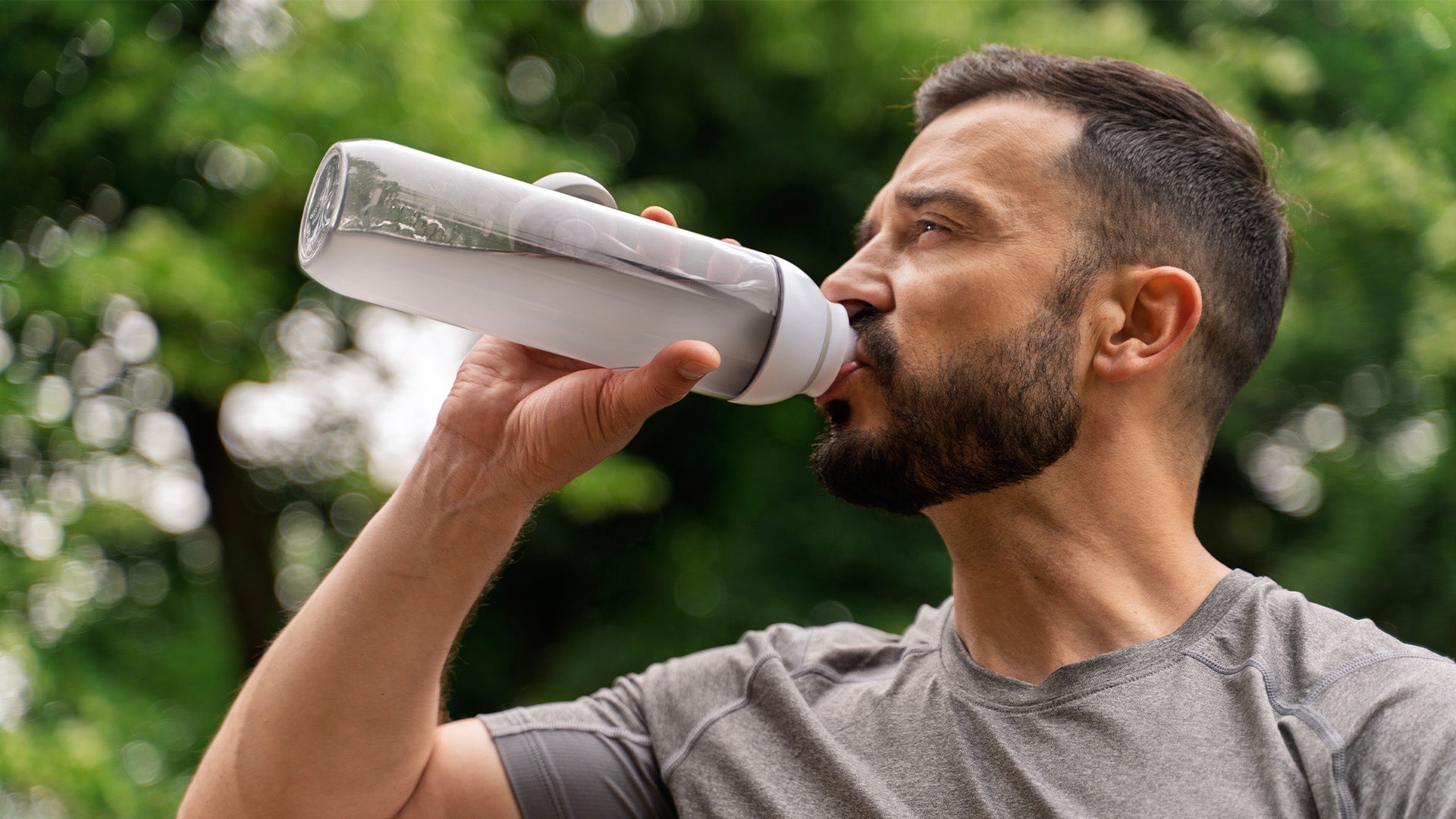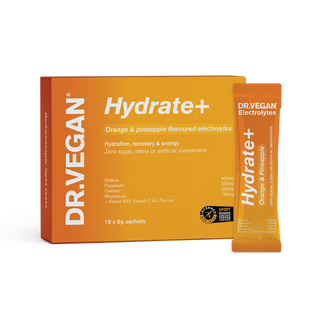Electrolytes and endurance: What you need to know

Comprised of around 50-60% water, the human body has been previously described as a 'hairy bag of water',2 but I would suggest that we are actually more like hairy bags of salty water! Sodium, potassium, magnesium and calcium are the four recognised electrolyte minerals in our body, which, when bound with chloride, bicarbonate, phosphate or sulphate ions, form salt. The role of electrolytes in the human body is multiple, but key functions in an exercising context are the support of nerve conductivity and muscle contractions, as well as maintaining fluid balance.
Electrolytes and athletic performance
According to sports nutrition researchers Baker and Jeukendrup (2014), sodium is the major electrolyte mineral in our plasma and hence sweat, whereas potassium is the major electrolyte intracellularly. Together they facilitate the sodium-potassium pump in our nerves. Because sodium chloride is the main salt that we 'sweat out' when exercising, it is added to most sports drinks and electrolyte formulations, along with potassium in smaller doses. But although less considered in sports drinks and products, calcium and magnesium are integral in muscle contraction and relaxation, respectively.
Prolonged endurance exercise, especially in the heat, has the potential to cause problems of dehydration and electrolyte depletion, especially in individuals with high sweat sodium levels; some athletes lose as little as 2.3 grams of sodium during a 4.5-hour training session, whereas others can lose 30 grams during the same period.3 Many endurance athletes associate exercise-associated muscle cramps (EAMC) with a lack of sufficient electrolytes, and anecdotally this appears to be true. Research findings, however, are mixed, which is likely due to the multifaceted nature of EAMC,7 including other factors such as hydration levels, training status, and environmental conditions. Nonetheless, many nutrition practitioners obtain good 'anti-cramp' results by ensuring adequate electrolyte provision. Additionally, by providing electrolytes in a solution with carbohydrates or peptides, hydration and fluid retention appear to be improved when compared with water alone.6
You may enjoy reading our guide to electrolytes.
Risks and symptoms of an electrolyte imbalance
The most common electrolyte imbalance in an exercising context is hyponatraemia (low sodium levels), which is particularly the case when athletes excessively consume plain water while trying to keep up with hydration demands. Symptoms can range from weakness, nausea and headaches to seizures and coma in extreme cases.4 Additionally, magnesium is commonly found to be depleted in athletes since it is involved in so many bodily functions, including musculoskeletal function, immunity and energy metabolism.8,9 Symptoms of magnesium depletion can include weakness, muscle spasms, hypotension, fatigue, and many chronic health imbalances.5
Practical advice for athletes
In theory, it is possible for an athlete to obtain all their electrolyte needs from their diet, but in practice, this is rarely the case. According to Baker and Jeukendrup (2014), if athletes are consuming diets that are consistently low in fruits, vegetables and wholegrains, they can become chronically depleted in electrolytes. What's more, exercise itself can be very demanding on electrolyte reserves, particularly so for magnesium, which is a vital cofactor in several steps of cellular energy production and is commonly depleted in athletes.8
Stepping back, electrolyte needs are therefore dependent on a person's overall nutritional intake of minerals, balanced with the utilisation of these minerals by day-to-day biochemical processes, extra metabolic needs during exercise, and losses in sweat, particularly in hot conditions. In addition to ensuring a diverse mineral-rich diet, many individuals will benefit from electrolyte supplementation. This may be a modest supplemental intake on a day-by-day basis, but most athletes, especially those exercising for long periods of time in hot conditions, should consider supplementing additional electrolytes over and above dietary sources around exercise sessions. It's also important for practitioners to evaluate the electrolyte needs of active individuals on a case-by-case basis and not to overly rely on general electrolyte guidelines.
You may be interested in trying our Hydrate+ Electrolytes. Hydrate+ provides the optimal balance of electrolytes, vitamins, minerals and amino acids to deliver everything your body needs for effective hydration, fluid balance, energy, focus, muscle performance, endurance, and recovery. It includes Sodium, Potassium, Magnesium, Calcium, Vitamin B12, Vitamin C, and L-Taurine, with zero sugar, stevia or artificial sweeteners.
View our range of award-winning probiotics, vitamins and supplements.
You may also enjoy reading:
References

















